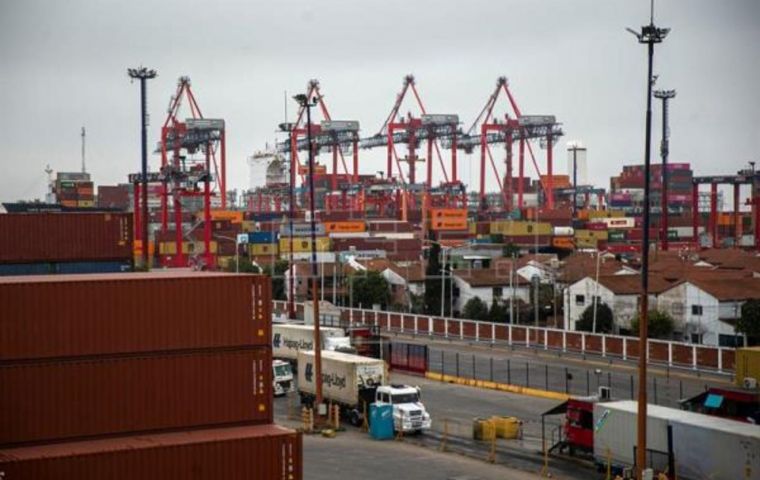MercoPress. South Atlantic News Agency
Latin America forecasted to grow a soft 2,6% in 2022 and 2,7% in 2023, World Bank
 Inflation has risen across the region, exceeding central banks' targets in most cases.
Inflation has risen across the region, exceeding central banks' targets in most cases. Growth in Latin America and the Caribbean region (LAC) rebounded to an estimated 6.7% in 2021, driven by favorable external conditions and pandemic-related developments, according to the World Bank's Global Economic Prospects. Region-wide new COVID-19 cases dropped sharply in the second half of the year, before surging in late December, even as the vaccination rollout progressed. Strong demand in key export destinations (the United States and China), high commodity prices, and continued high remittances to Central American and Caribbean countries were also supportive of growth in 2021.
Inflation has risen across the region, exceeding central banks' targets in most cases. The increase is attributed to firming demand associated with economic reopening, rising food and energy prices, weather-related electricity production disruptions, and, in some countries, currency depreciation and large increases in money supply.
Several countries—including Brazil, Chile, and Paraguay—are suffering their worst droughts in decades, requiring a switch to more costly fossil fuels to produce electricity typically generated by hydropower.
Regional growth is projected to soften, to 2.6 percent in 2022 and 2.7 percent in 2023, as fiscal and monetary policy is tightened, improvements in labor market conditions continue to be sluggish, and external conditions become less supportive.
The recovery to pre-pandemic levels of GDP will be uneven across the region, and prolonged in some countries. The projections through 2023 imply that on a GDP-weighted basis, LAC will lose ground in per capita income relative not only to advanced economies, but also to the East Asia and Pacific region and the Europe and Central Asia region.
Brazil’s economy is projected to slow to 1.4 percent in 2022—owing to weak investor sentiment, erosion of purchasing power by high inflation, macroeconomic policy tightening, slowing demand from China, and falling iron ore prices—before rebounding to 2.7 percent in 2023. Mexico's economy is forecast to soften to 3 percent in 2022 and 2.2 percent in 2023. Supply chain bottlenecks are expected to linger into the first half of 2022, while external demand will be limited by slowing growth in the United States and macroeconomic policy is tightened.
Growth in Argentina is projected to slow to 2.6 percent in 2022 as private consumption slows on account of a drawdown of fiscal stimulus and investment fades, although carry-over from strong growth in 2021 underpinned a forecast upgrade for 2022. Strong cyclical rebounds in Chile, Colombia, and Peru in 2021 will soften in 2022 and again in 2023.
Overall in the Mercosur block, prospects are moderately encouraging since the hydric deficit will limit significant harvest production, and the political situation remains full of uncertainty. Brazil is facing a presidential election next October, and the government could outstrip the budget to ensure Bolsonaro's reelection bid. Argentina still has to reach an agreement with the IMF to restructure its debt, and the political situation remains vulnerable. In junior partners, Paraguay and Uruguay, besides the drought, global inflation, higher international interest rates, the situation is far more stable, but conditioned to surprises from the larger members.
In Central America, growth will remain robust in 2022, at 4.7 percent, owing to an improved outlook for COVID-19 vaccinations and continued robust remittance inflows. Growth in most Caribbean countries is projected to accelerate in 2022, on account of the expected timing of the recovery in international tourist arrivals.
The outlook is subject to several downside risks. These include spikes in COVID-19 cases, financing and debt-related stress, and disruptions from extreme weather events and natural disasters.
The durability of economic recovery in LAC, as elsewhere, depends on the control of the pandemic. COVID-19 outbreaks, including those triggered by new variants of the virus, remains a downside risk even in countries with high vaccination rates. A sudden deterioration of investor sentiment, especially in an environment of elevated inflation and high government debt, could trigger debt servicing challenges and bouts of capital outflows. Economic disruptions related to extreme weather, partly related to climate change, and other natural disasters pose a significant risk not only for the regional growth outlook but also for the lives and livelihoods of people living in the region.
Source: World Bank.




Top Comments
Disclaimer & comment rulesCommenting for this story is now closed.
If you have a Facebook account, become a fan and comment on our Facebook Page!